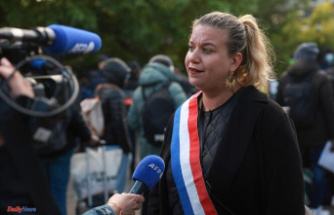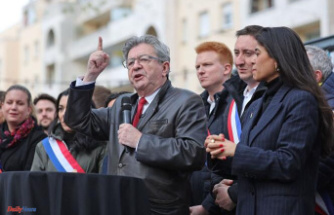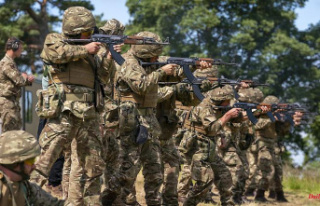Right-wing extremism remains a danger. From the military sports groups of the post-war period to the Oktoberfest attack in 1980 to the NSU, right-wing terror has repeatedly shaken German society. The ntv podcast "We are history" is about the networks behind it.
The report by the Office for the Protection of the Constitution from June 2022 puts it in black and white: Right-wing extremism remains the greatest threat to Germany’s democracy. Nationwide there are 13,500 violent right-wing extremists, the number of their supporters is 33,900 - and the trend is rising.
Where does this potential for violence come from? And how is the right-wing scene organized? Kemal Bozay, professor of social work and social sciences, conducts research on this topic. "There are different networks: political parties like the NPD, international lines of connection between neo-Nazi groups, Combat 18, the NSU 2.0 - different groups "come together", says Bozay in the ntv podcast "We are history" on right-wing terrorism since 1945. " Right-wing populism gives us a basis for this."
The first networks formed in the 1960s and 70s. The so-called military sports groups, which carried out attacks and murders, were created on the model of the SS. Gundolf Köhler, who carried out the right-wing extremist terrorist attack on the Oktoberfest in 1980, also belonged to the Hoffmann Wehrsportgruppe. This fact has always been ignored in the social context, says Kemal Bozay. The attack killed 13 people and injured 221.
According to Bozay, the processing of this attack is characteristic of how right-wing terrorism is dealt with in Germany. "It wasn't processed properly for decades. It's only in recent years that we've seen an intensive debate about it. Arming took place via the right-wing extremist networks, and the agitative form was taught. One wants to create social upheavals through such attacks." In the case of the Oktoberfest attack, the federal elections of 1980 were to be influenced. "The culture of remembrance has suppressed many things," says Bozay.
The NSU is another example of how German authorities have long been blind in the right eye, Bozay said on the podcast. "If you go deeper, you see that it wasn't just a trio, but that there are right-wing extremist networks and connecting lines behind it. All the young people who were anchored in this network were also active in other networks, such as the Example of the Thuringian homeland security."
The NSU murdered ten people between 2000 and 2007, including nine migrants. At the time, both the police and politicians ruled out a right-wing terrorist background. "The investigation was clearly geared towards the community of Turkish origin, so that for years people who were victims and those affected were stigmatized as perpetrators. The state authorities did not work properly here, even though the Office for the Protection of the Constitution knew who the perpetrators were," says Bozay, who calls for greater awareness of the dangers of right-wing extremism.
"You can only fight the continuation of right-wing extremism if politics, the media and society show a clear edge. In addition, we must strengthen political education work with young people. We must make the young people aware of what is behind the motives. You must not suppress that ", warns Bozay. "In our society of many, an acceptance for a common 'we' would have to be developed in which we don't talk about the differences but about the similarities, and where there are spaces for encounters to counteract all these misanthropic tendencies."












